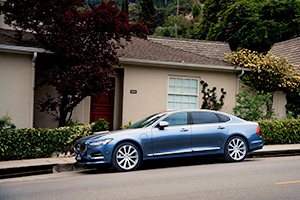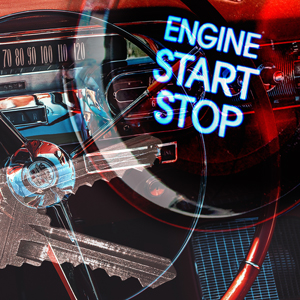Read time: 4 minutes
Like many questions in the automotive world: It depends.
Classic Car Tommy would say: Yes.
I have a few cars that are carbureted. In those older model engines, it’s necessary to warm up the engine for drivability reasons.
With a carbureted engine, the air/fuel mixture is not responsive to outside temperature like modern, electronic, fuel injected models. It would result in the engine stalling. In colder temperatures, carbureted engines need that extra intake manifold heat to properly atomize the air/fuel mixture.
Modern Car Tommy would say: No.
I also have a few newer cars with fuel injection (bless my wife). Newer models are designed to be ready-to-drive upon ignition.
Let’s assume most of you drive more modern cars (anything newer than 1996 model year.) Regardless of whether you let your engine “warm up” or not, there are pros and cons to doing so. Let me tell you a little story.
The Tale of the Idled Modern Engine.
Once upon a time (in the classic car era), people could leave their cars running in the driveway. At that time, it was necessary for the engine, but also nice for the cabin in extreme hot and cold temperatures. Today, turning on your car’s engine and letting it run unattended can result in a visit to the police station to report a theft (you’ll probably have to Uber there). Not much of a happy ending to that story.
But suppose you start the engine and stand guard; will anything bad happen then? Not necessarily. Today’s engines are designed to be ready to drive within 20-30 seconds. In this short span of time, the computer in your modern car responds to environmental factors to adjust air/fuel mixture.
If modern cars don’t need to warm up, then why do people still do it?
Because we want to be comfortable! Your vehicle’s air conditioning system won’t give you cold air without the engine running. The engine’s A/C compressor is run by the serpentine belt, which doesn’t move unless the engine does. I’ll admit, on a hot day, you’ll catch me letting my engine idle as the cabin cools down.
In the winter, your car’s heater uses the engine coolant to heat up the cabin. Through a heat exchanger, the heat from the coolant is drawn from the cooling system and transferred into the cabin. If the coolant is not given time to collect heat from the engine, I hope your coffee is hot because you’re going to be cold for a while.
How long can my engine safely idle?
Do you trust your neighbors? I’m kidding. The downside to letting an engine run is that it consumes fuel. The longer the engine runs, the more fuel it consumes. As you can imagine, letting the engine idle for long periods of time will drain the gas tank and drop your fuel economy significantly. And that means no extra cash when Taco Tuesday rolls around.

Idling engines also produce harmful exhaust. Carbon dioxide, carbon monoxide, and hydrocarbons are bad for the environment. While vehicle emissions standards have improved greatly over time, pollutants are still produced by automobile engines.
If there’s any one piece of information out there that gives a clear answer on length of time to idle, the closest is in your owner’s manual. Most automakers suggest to not let the engine idle for more than 10 minutes. So, two bowls of chips and salsa.
What about hybrid electric vehicles (HEV)?
Hybrids use heat pumps, vaporized coolant and new designs of the coolant flow systems. To cool the cabin, hybrids use an electric A/C compressor controlled with the tap of your finger, lying in bed, before getting up to work. Yes, they have an app for that too. You can set a desired temperature for your vehicle to be at every morning, kind of like your home thermostat.

Final answer
Letting your engine idle is like many other automotive questions: the answer is somewhat varied. With the evidence presented, perhaps the best answer I can give is “yes, but not for too long. And keep an eye on it.” This way, harmful emissions are minimized (look at you, helping the environment!) and you don’t have to worry about having your car stolen from your driveway (bonus!).
I would also recommend that you take it easy on the gas pedal and the brakes while it’s still warming up. So no peeling out, or drag racing, or lead-footing, or hot rodding, or show-boating, until it reaches adequate operating temperature.
Happy motoring!

by Tommy Garcia
BG Proving Ground–Shop Foreman



0 Comments